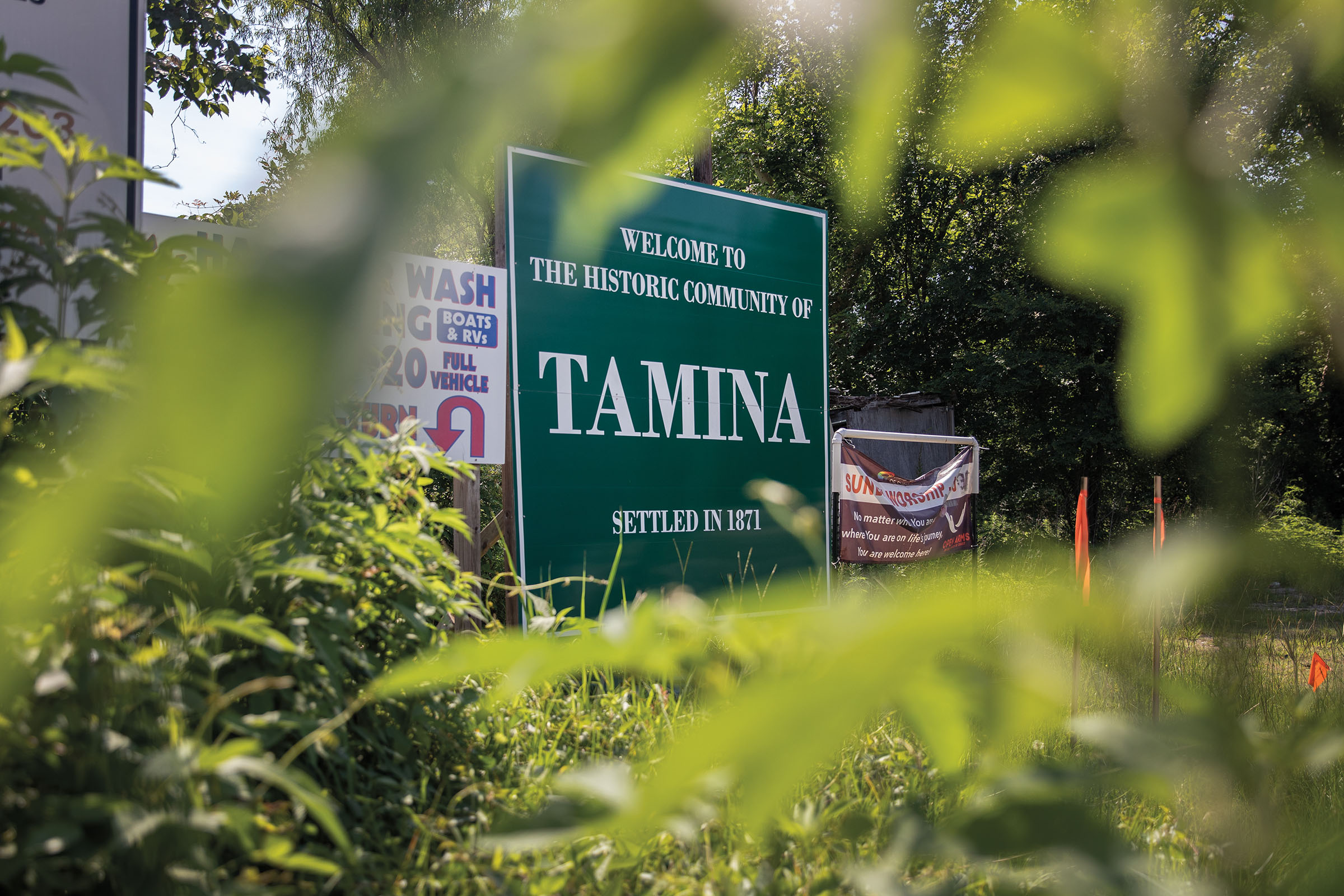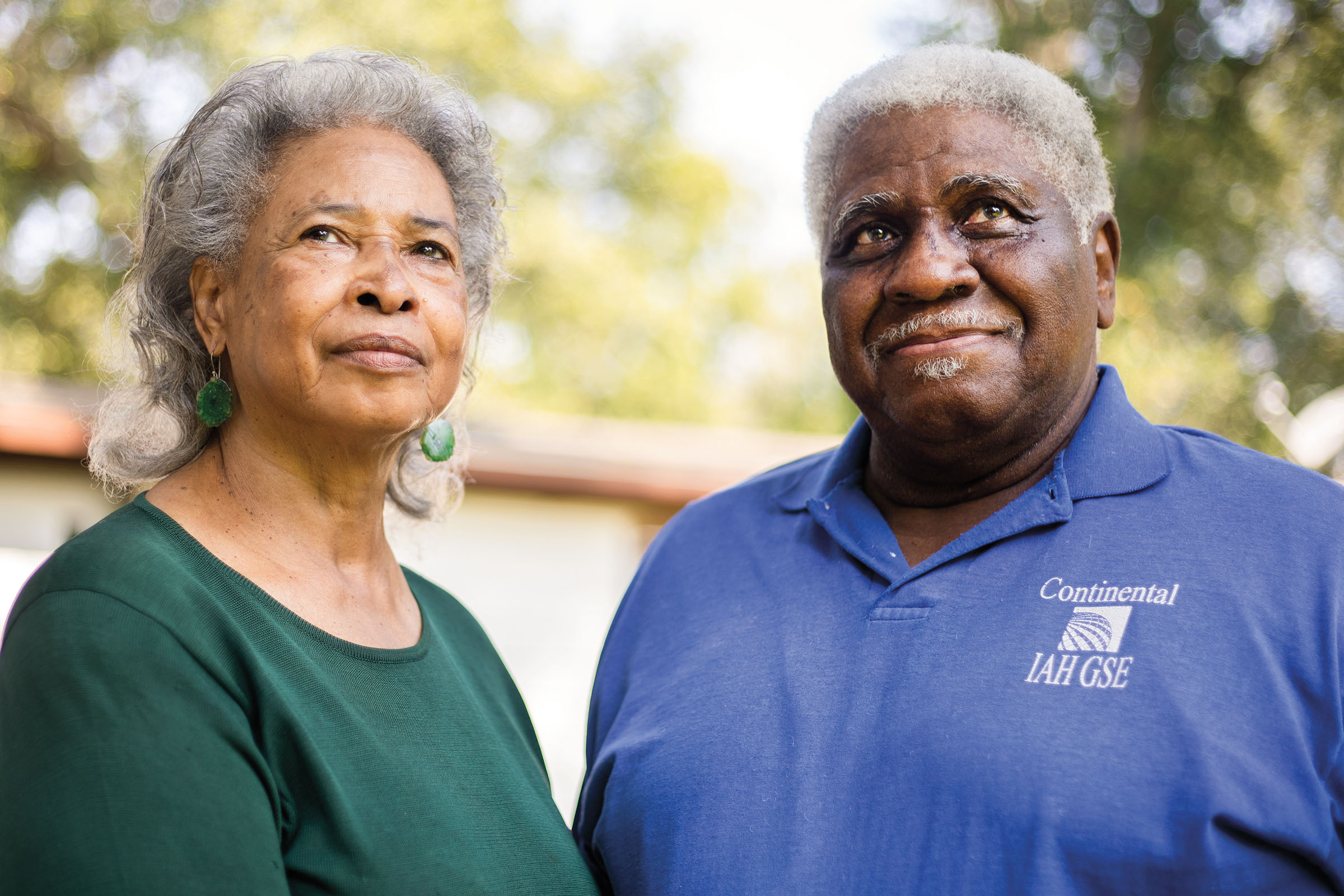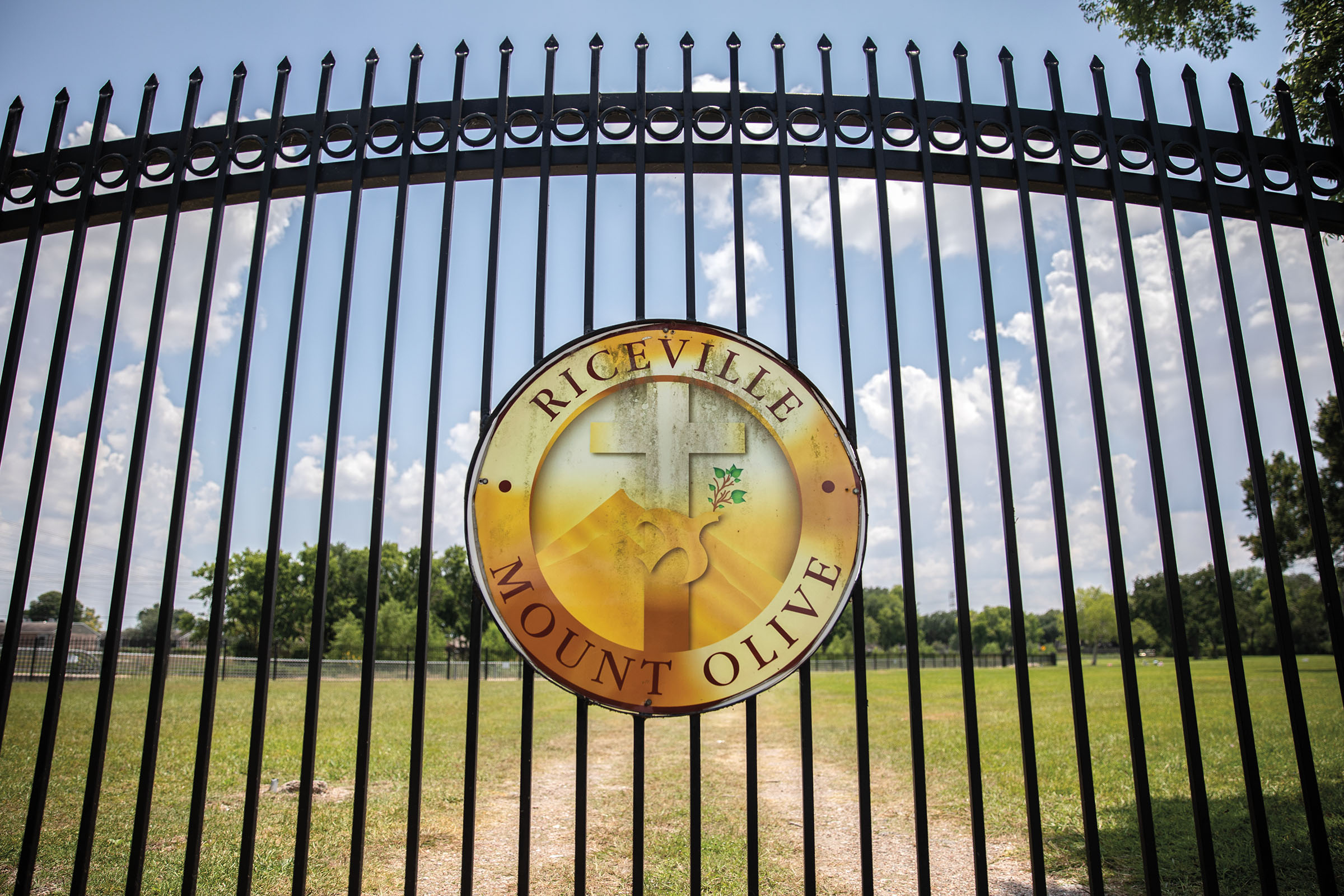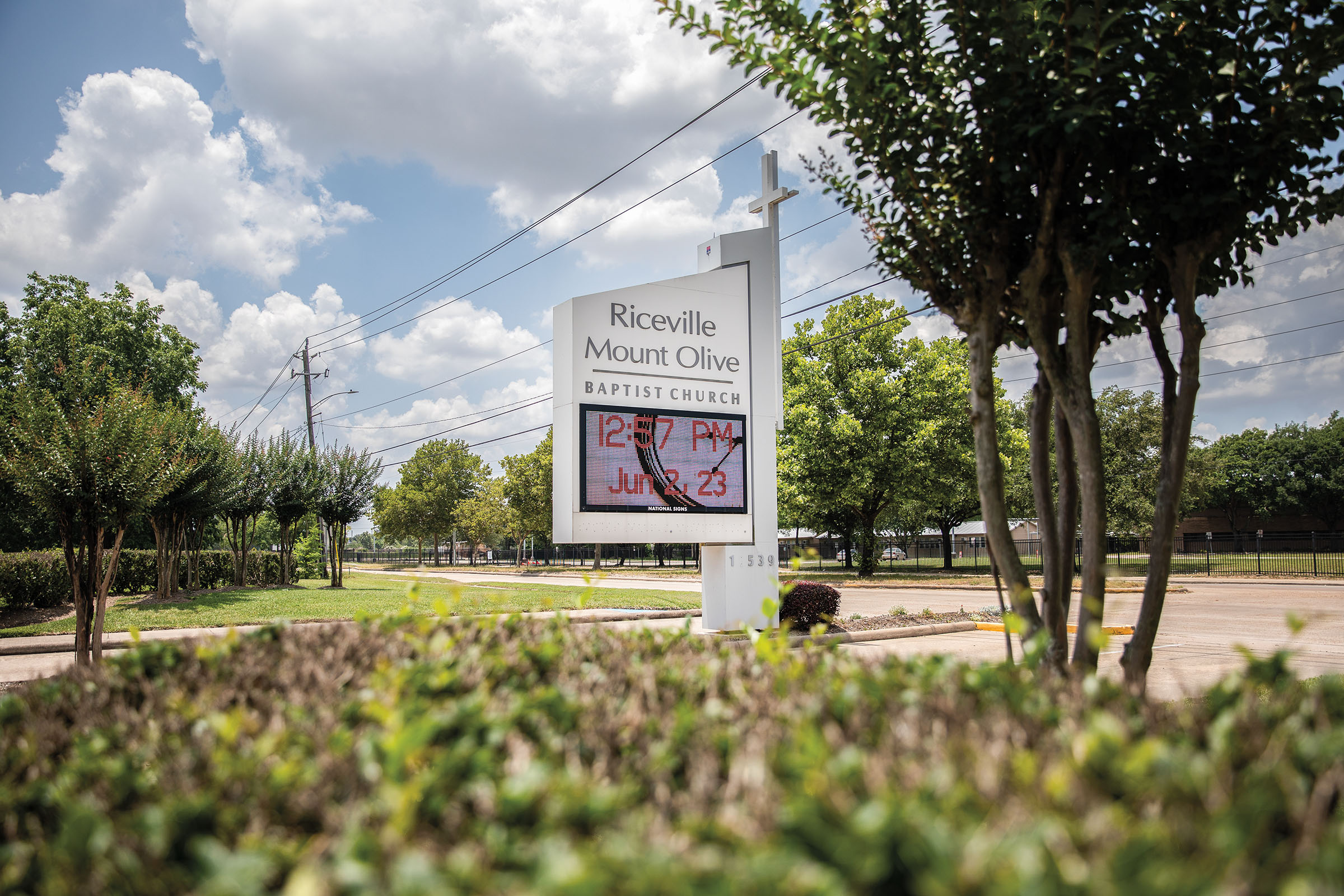
Family history plays an important role in the research of Andrea Roberts, the founder of The Texas Freedom Colonies Project. She started the project as a doctoral student at the University of Texas at Austin in 2014 to study the towns founded by freed Black families and friends after emancipation, including Houston-area Riceville, where Roberts’ family are longtime residents.
“Freedom colonies were intentional Black community creations, not where people were pushed to live by default,” says Roberts, who holds a PhD in community and regional planning.
Her project includes an interactive map of freedom colony locations in Texas. So far, 557 names of towns founded between 1866 and 1930 have been identified through archival research. Of those, 489 have been verified as having existed, though only 10% were ever incorporated as legal towns. All are the subjects of growing research, exploration, and discovery by both scholars and descendants.
After emancipation, the great majority of the 250,000 newly freed Texas slaves scattered from plantations in search of somewhere they could call their own. “They seemed to want to get closer to freedom … like it was a place or a city,” said freedman Felix Haywood of San Antonio in the Slave Narratives—first-person accounts from former slaves collected in the 1930s for the Federal Writers’ Project.
Freedom was visualized as a place, a self-contained haven created by Black families and friends beginning their newfound independence in relative peace and isolation, and in total control, according to Roberts. They bought land, or squatted; built homes, churches, and schools; buried loved ones; and farmed in these small settlements.
Historical markers throughout East Texas, where slave populations were most dense, note surviving communities, schools, cemeteries, and churches. But Roberts’ map identifies locations to the south, like Restlawn Cemetery near Edinburg, and as far west as the Doyle District near Kerrville. Here, we explore the stories of three colonies holding on to their heritage.

Shankleville
Most freedom colonies share similar founding stories, but none are as improbable as the tale of Jim and Winnie Shankle’s endearing romance that led to the founding of Shankleville in East Texas’ Newton County.
In the 1840s, the couple were enslaved in Mississippi when Winnie and her three children were taken to what is now Newton County. Yearning to reunite with his wife, Jim escaped and navigated 400 miles by foot, mostly at night to avoid slave patrols. They reunited one day at dusk when he found Winnie, still enslaved, working near a spring.
After emancipation, the couple became the first African Americans to buy land in Newton County. Along with friends and family members, they built “prosperous farms, churches, a cotton gin, grist mills, sawmills, and schools which operated from 1883 to 1909,” according to a 2016 article in the Longview News-Journal.
Lareatha Clay, a descendant of the Shankles, is an advocate for acknowledging and teaching Shankleville’s history. “They used to say, ‘If you meet Lareatha, after five minutes you will know about Shankleville,’” Clay says.
Clay’s knowledge about freedom colonies was enhanced in the 1980s while living in Orlando, Florida, where she served on the city’s historic preservation board. She helped stage the nationally recognized Zora Neale Hurston Festival of the Arts and Humanities in the writer’s hometown of Eatonville, one of the first self-governing African American communities in the U.S., founded in 1887. The festival was developed to reinvigorate Eatonville.
“I volunteered there for four or five years, and I thought, ‘This could work for Shankleville,’” Clay recalls. “But what can we do? We don’t have a Zora Neale Hurston; no famous person who grew up in Shankleville. What can we use? Purple hull peas!”
She started the annual Purple Hull Pea Festival in 2014 as a nod to the staple crop in Shankleville. Some years, historians, preservationists, and archeologists present at the event and address the histories, social foundations, and challenges of surviving communities.


County Line
The remoteness of the County Line freedom colony defines its charm, at least to Beatrice Upshaw. She is the 12th of 13 children born to Leota and Monel, who is descended from Guss Upshaw, one of three brothers who founded the town in the 1870s. The secluded Piney Woods community is 20 miles northwest of Nacogdoches, which means long drives if you’re looking for a grocery store.
“That’s part of what you do if you live out here,” Beatrice explains. “We were quite sheltered geographically and culturally, just a community of Black folks, family members. Nobody bothered us. The sense of community, the village, was very much a thing for us.”
Her memoir, A Biscuit For Your Shoe, recalls how John Upshaw, the family patriarch, had borrowed $75 in gold in 1875 from L.C. Whitaker to grow his own crop of cotton and corn on Whitaker’s land in Douglass. The Upshaw brothers followed that by purchasing land nearby, which became County Line.
The three brothers farmed, milled, and worked as blacksmiths to support the fast-growing community. Originally spread out over 1 square mile, the town grew to 8 square miles of disappearing forest and declining population just east of the Angelina River.
“There are so few of us now, and everything that used to be farm and ranch land now is just trees and brush,” Beatrice says. “People moved away, people died. There just isn’t anyone here to farm and ranch like in times past.”
Tamina
Progress has already put down roots in Tamina. The town’s approximately 1,000 residents are mostly descendants of the 1871 founding freedmen who came to the area to help construct the Houston and Great Northern Railroad and later worked at Grogan’s Mill.
Tamina (pronounced, “tam-mi-nah,” or “tam-man-nee”) sits near The Woodlands and Shenandoah. For several decades, the town has fought for basic services and earlier this year came to an agreement with the city of Shenandoah to use federal funds to install sewage and water lines. Even so, Tamina’s existence hangs in the balance as gentrification gradually nudges the vibrant, tightknit settlement toward its likely demise—to be replaced by upscale housing and commercial development.
Some outsiders consider Tamina an eyesore, yet locals report weekly phone calls, offers from developers, and sightings of prospective land and home buyers cruising the colony’s narrow roads.
“We could be in a different financial status, but we’re fighting for the community,” says James Leveston, president of Tamina’s water board and a retired airline mechanic.
Leveston and his wife, Julia, are lifelong Tamina residents passionate about protecting a rural life centered on family, friends, and neighbors.
“It’s my home. I grew up here,” says Julia, a retired Houston ISD secretary. “We had cows, horses, pigs, chickens. Daddy grew everything but cotton—corn, peas, squash, okra, cantaloupes—and we gave to all the neighbors. They were rough days, but good days.”
Living History
Find historical markers, churches, cemeteries, or neighborhoods at these freedom colony sites
Dixie Freedom Colony, est. 1853: Settlement and church markers. Dixie Missionary Baptist Church is the oldest slave-built church in Texas.
Doyle District in Kerrville, est. 1909: Doyle Colored School historical marker. The one-room schoolhouse had no utilities until running water was installed in 1920 and electric lights were installed in 1923.
Edinburg’s Restlawn Cemetery, est. 1928: Cemetery and marker. Believed to be the only graveyard in Hidalgo County dedicated to African American burials.
Riceville, est. 1850s: Cemetery and marker. The cemetery is located on the original grounds of Riceville’s Mount Olive Baptist Church.
Saint John’s Colony, est. 1873: Community and marker. Originally named Winn’s Colony in honor of John H. Winn, the community name was changed to Saint John Colony after Winn organized Saint John Missionary Baptist Church in 1873.
Rita Wiltz works to preserve Tamina and its history as founder and executive director of the nonprofit Children’s Books On Wheels, which provides reading materials to children in and around Montgomery County.
“Tamina will survive,” Wiltz says. “We have survived, and we are survivors.”








